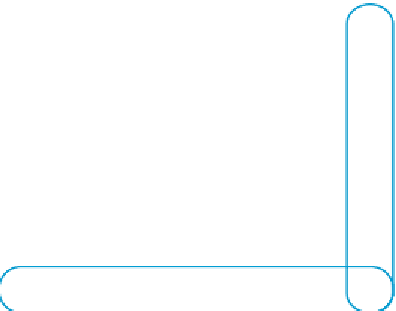Environmental Engineering Reference
In-Depth Information
Consensus exists today on the benei ts of interactive discussions between all stakeholders in
a mining project and of group decision-making in environmental assessment, in particular
for ranking the signii cance of each impact and selecting and designing impact mitigation
priorities that relate to the social dimension of the project.
In
Figure 9.12
the range of stakeholders involved in an assessment process is neatly
organized by scale and role. Of course, they rarely fall in such clear categories. Sometimes
the boundaries between categories are rather blurred. However in spite of such simpli-
i cation,
Figure 9.12
helps to illustrate the wide range of interactions that can develop
between different stakeholders, and the benei ts of interactive workshops as part of the
environmental assessment process. Impact assessors (usually scientii c consultants) think
differently from decision makers (e.g. mine managers, usually with an engineering back-
ground), an observation not meant as a value judgement, but to appreciate the difference
in problem formulation and problem solving. The scientist tends to ask: '
How can I make
my impact prediction more accurate?
' This contrasts with the thinking of the potential user
of an assessment: '
What can I do about it (given the regulatory, resource, time, and political
constraints that I'm working under)?
' A successful answer to one helps little in solving the
other one's challenge and vice versa.
An internal workshop involving only the EIA team prevents interactions along the full
spectrum of stakeholders. A workshop with only local stakeholders ignores the spatial
scale of large mining projects.
Group decisions consider and weigh different perspectives about the same issue, balanc-
ing differences in importance assigned to the issue by different people. Group discussions
also help in identii cation and consideration of aspects not previously taken into account
in evaluating environmental impacts. Such discussions also draw on the collective experi-
ences on a particular issue from people with different educational and practical back-
grounds. Group discussion and subsequent decision on project impacts are of most benei t
where the composition of group members rel ects the various stakeholders involved in the
project - mining engineers, task specialists, consultants, researchers, community members,
and administrative authorities.
Consensus exists today on the
benefi ts of interactive discussions
between all stakeholders in a
mining project and of group
decision-making in environmental
assessment.
Impact assessors think differently
from decision makers.
Group decisions consider and
weigh different perspectives
about the same issue, balancing
differences in importance
assigned to the issue by different
people.
FIGURE 9.12
Participation along the Spectrum
PARTICIPANTS ALONG THE SPECTRUM
Action
Knowledge
The graph helps to illustrate the wide
range of interactions that can develop
between different stakeholders, and
the benefi ts of interactive workshops
as part of the environmental assess-
ment process.
Source:
Based on Moser 1999
Decision
Maker
Manager
Consultant
Task Expert
International
National
Regional
Local
EIA by Local Professionals





























































Search WWH ::

Custom Search